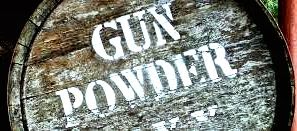 |
| One Keg of Gunpowder |
 |
| One Keg of Rum |
In the United States, proof is defined as double the percentage of alcohol contained in a solution at 60 degrees Fahrenheit or 15.6 degrees Celsius. Thus, 150 proof would be 75% alcohol and 100 proof would be 50% alcohol.
 |
| Today's Labels show ABV and Proof |
This is how it came about and why we still talk about alcohol content in terms of proof. It seems that we are moving rapidly though toward ABV to replace the old term "proof". ;o)
